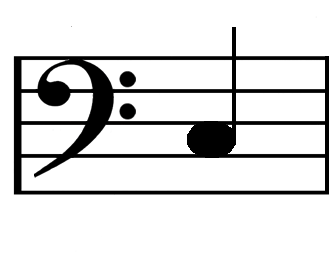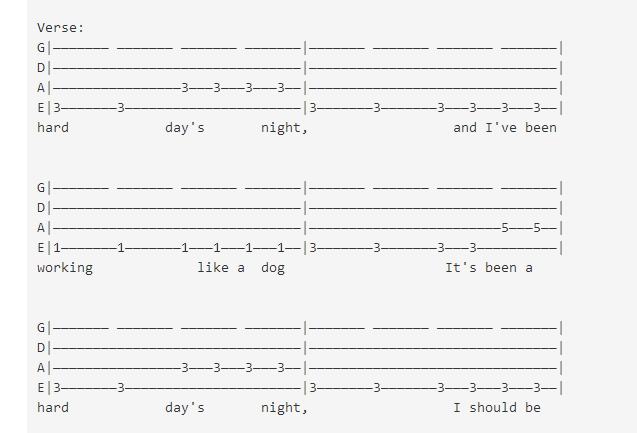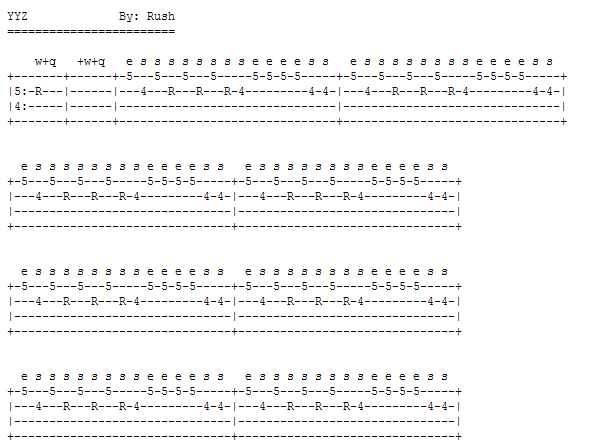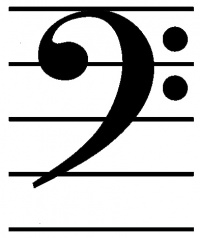Welcome to Part 5 of the Bass Essentials Series. In this section, were going to tackle sheet music and reading music. Not only are we going to look at learning to read standard notation and sheet music on bass guitar, but we’re going to cover tablature reading as well. While on the topic of each, we’ll look at some of the pros and cons of learning both and explore some of the challenges that might come with learning how to read tab and standard notation.
Introduction:
Now that you have bought your bass, bought your amp, tuned your bass guitar up properly and have some knowledge on the basic anatomy of your bass guitar’s neck and fretboard, now let’s explore learning to read tab and learning to read bass guitar standard notation and sheet music
Different musicians have different levels of competency when it comes to reading music – tab or standard. Much of the inclination to learn comes from where you want to be as a musician and how far you want to take learning this skill.
Many bass players who hope to learn a new instrument and some songs to play for friends and family might find more value in just learning tab than the musician aspiring to play high paying gigs and do extensive session work.
This post is designed to give you the reader a bare-bones fundamental approach to reading bass guitar music. At the end of this post, you should:
- Have an entry level understanding of the notes that are part of the bass clef and how they correlate to the notes on the bass guitar fretboard.
- Be able to look at a piece of sheet music and understand what the notes and symbols mean
- Be able to look at a tablature website (like this for example), select a piece of music and understand what is going on musically as well as what is on the fretboard.
Learn to Read Bass Guitar Tab: The Fundamentals
If you’ve ever wanted to learn a song on bass, there’s a good chance you typed the name of the song into Google and the first thing that came up was a result that looked like this:
A strange mishmash of numbers and dashes and letters arranged in a way that kind of resembles your bass’ fretboard.
Well, you came across a piece of tabbed music.
Tablatures (or tab for short) is music represented by where the note is on the fretboard, not by the note itself. Put another way, if you go to the A string and press the 3rd fret, you’re playing a C – only the C is not represented like this:
 but instead like how you see above with a number 3.
but instead like how you see above with a number 3.
Tab music is considerably easier to learn than standard notation. The logic is very intuitive: go to that string, press that fret and the not comes out.
The use of numbers as they correspond to frets is a very beginner-musician-friendly approach to learning song. Pretty much anyone brand new to an instrument can pick the instrument up, look up what fret corresponds to what position on the neck and play.
However, let me ask you this question: what’s the rhythm of that tabbed passage above? We know the notes, but how do you actually play it?
Here in lies the glaring problem with tab: it’s considerably limited in that it doesn’t (easily) show any of the details of the music. 16th note or 8th note? Loud or soft? Staccatto or lagato? These essential questions are usually not answered on a piece of tablature. Sometimes its even up to the listener to figure out these important details of the bass line as the tab does not explicitly reveal them.
Study Bass has a few other observations on the cons of tab including:
- Learning tab and tab only can isolate you from the rest of the musical world. Professional musicians don’t often use tab in rehersals
- Tab usually can’t be read standalone. It usually requires you hear the song being played in conjunction to understand where the tab begins, ends and generally fits in the bigger musical picture.
- Fingerings are not usually denoted. While this is more of a stylistic aspect, for more complicated tabs that require considerable finger dexterity to learn, having fingerings annotation to show what finger should go where and start where is often missing.
There are tabs that are more detailed, however. Take this excerpt from Rush’s ‘YYZ’:
In this excerpt, you can now see that we have a rhythm to follow in addition to the notes of the song. But one thing you might notice right now is that it can be pretty difficult to read. There is a lot going on on this page. Lots of numbers, letters of varying sizes and capitalization and dashes. Speaking personally for a moment, as useful as I’ve found these detailed tabs, I’ve found them just as difficult to read.
Learn to Read Bass Guitar Standard Notation: The Fundamentals
Learning to read bass guitar sheet music is a considerable undertaking that can take years to master. That being said, it’s the application that takes considerable time to master, but the fundamentals are rather straightforward.
Bass guitars play using the bass clef (aka the international sign of bass):
The bass clef dictates how the notes on the staff will be represented. In bass clef, the staff reads like this:
The open strings on the bass guitar are highlighted here:
You’re probably wondering what the deal is with the D and the E string being so close to one another. Well, in this representation, the notes are all on the staff. The circled E here is the octave of the low, open E string.
Understanding how these notes are used and arranged is where the challenge of understanding standard notation music comes from. Moreover, being able to sight read these symbols in real time and perform them is the biggest challenge you’re likely to face. But that skill comes with time, patience and practice.
Regarding the values of these notes, I cover all of these in my Counting 101 free download.
And that’s that. It’s really that straightforward.
“Do I Even Need to Learn How to Read Music?”
The answer is no – but I put an asterisk to that answer.
Like I mentioned before, how much you want to learn to read music is directly hinged upon what kind of bass player you want to be. If you’re looking to entertain friends and family, maybe rigorous sheet music reading exercises wouldn’t benefit you as much as learning some Beatles songs and performing them at family gatherings with some friends. Additionally, if you’re looking to make music your professional career – the one you depend on for income – then maybe learning to read sheet music and training yourself in that particular skill would be more to your interests. Finally, if you’re someone who prefers to learn with their ears and improvise on the spot, maybe learning to read music period wouldn’t be the best use of time and energy – at least not at first.
There are many different avenues and they depend strongly on what kind of player you want to be. I’m not going to write that you MUST learn XYZ things to be a good musician, I’m simply laying this out in practical light. What you want to do with these particular skills is up to you as a player – like just about everything else in the fine arts.
- How to Set up a Pedal Board for Bassists - June 16, 2021
- The Best Bass Guitar Effects Pedals Guide You’ll Ever See [INFOGRAPHIC] - April 24, 2020
- The Ultimate Beginner’s Guide to Everything About Bass Guitar Strings - March 20, 2020





So, in the notation example you are saying the E string has a higher pitch than the A and D strings? Doubt it. Tuning a bass like that would probable damage the bass.
same thought. open E string is 1 line below on the staff.